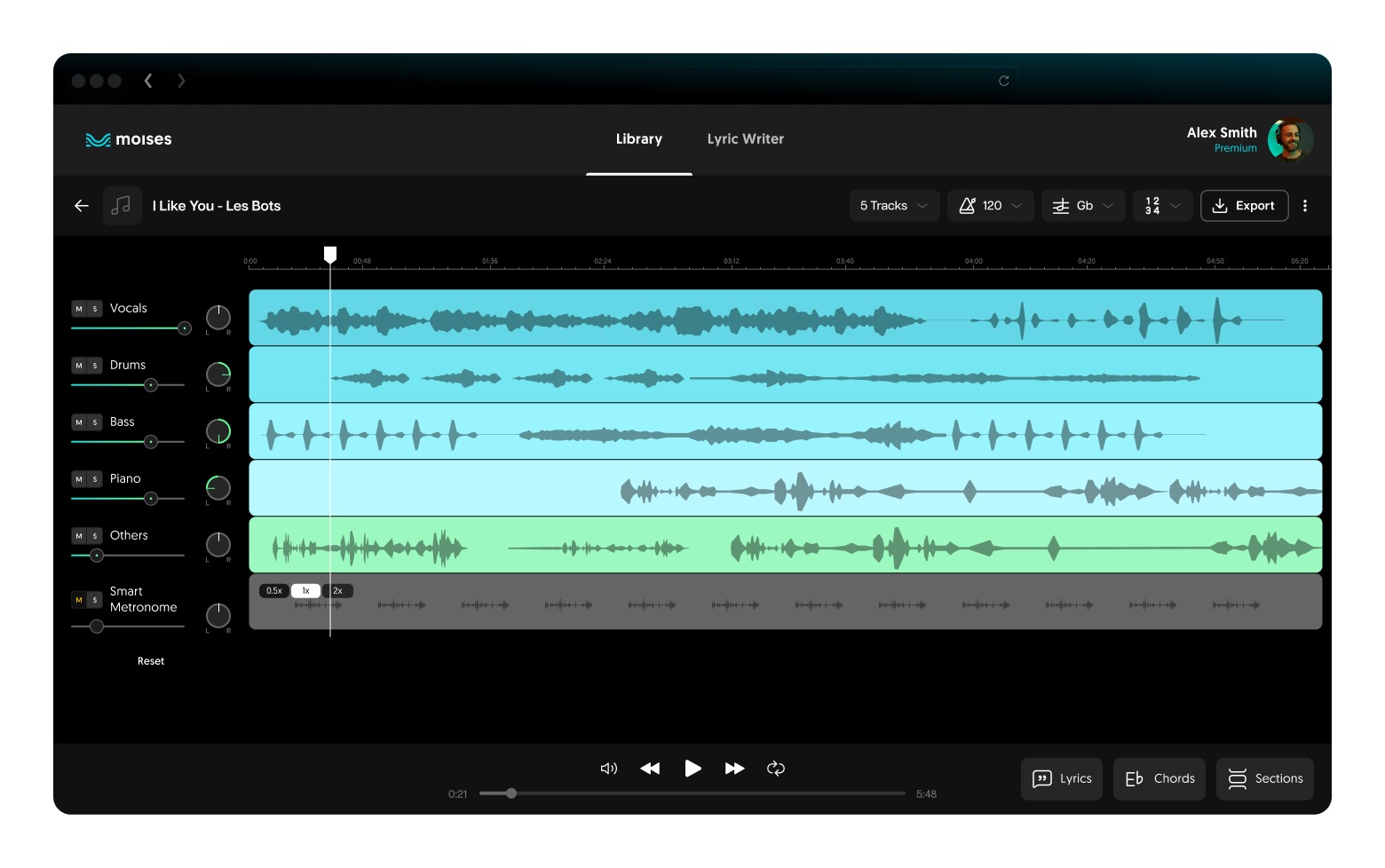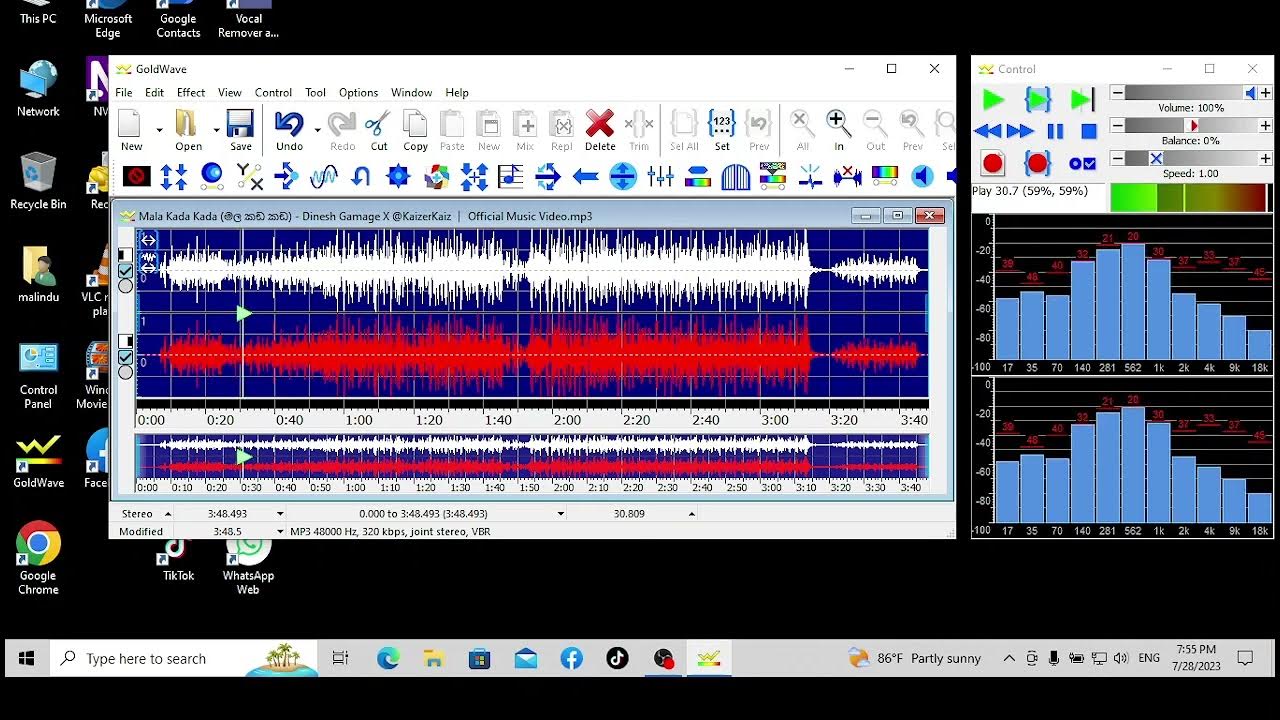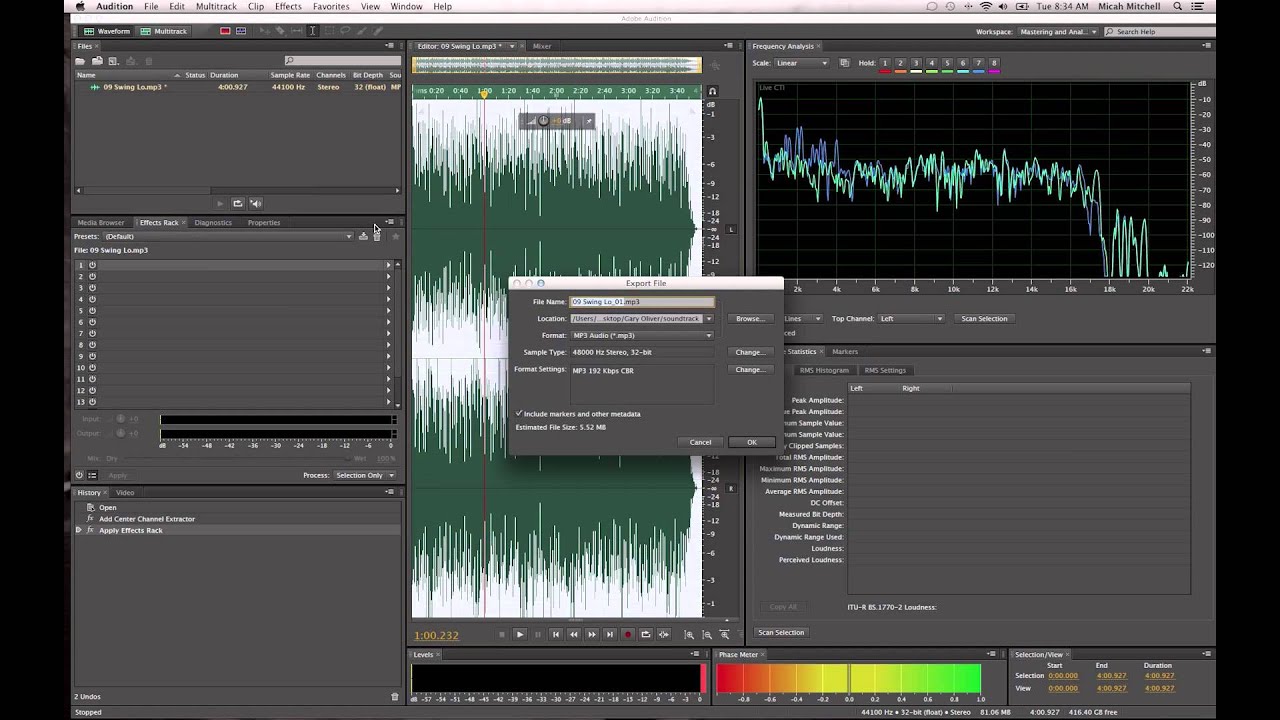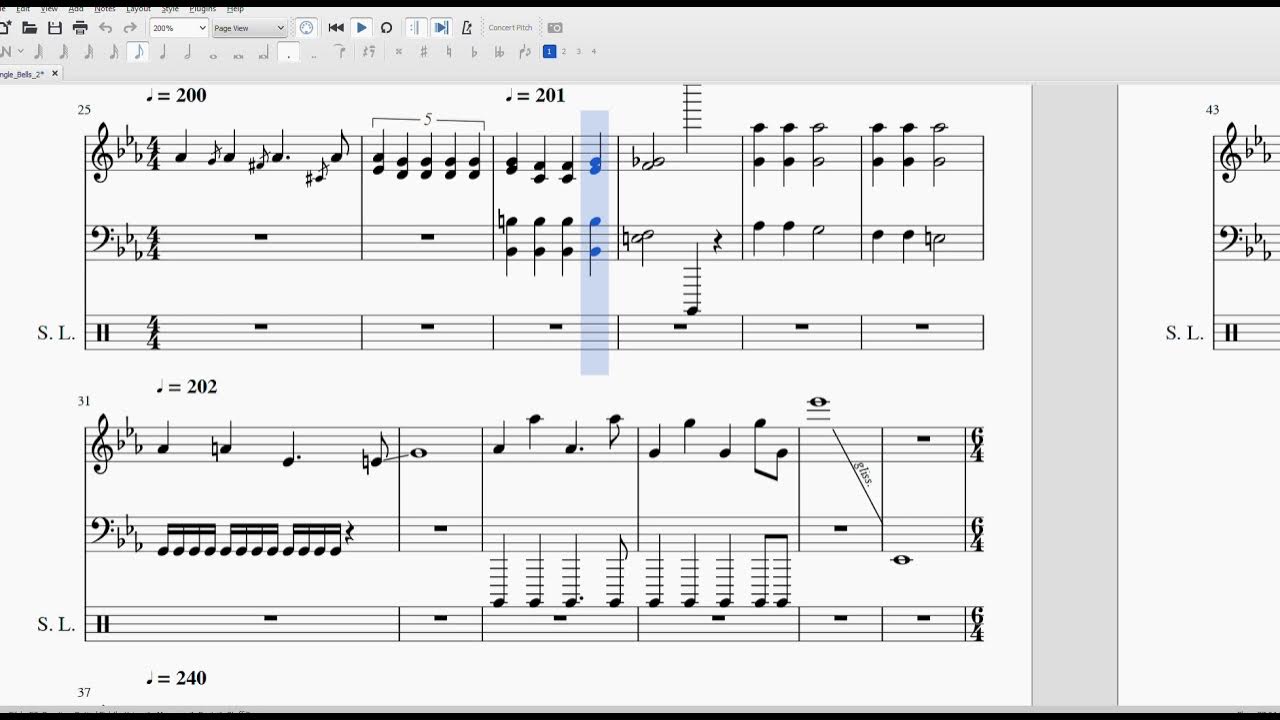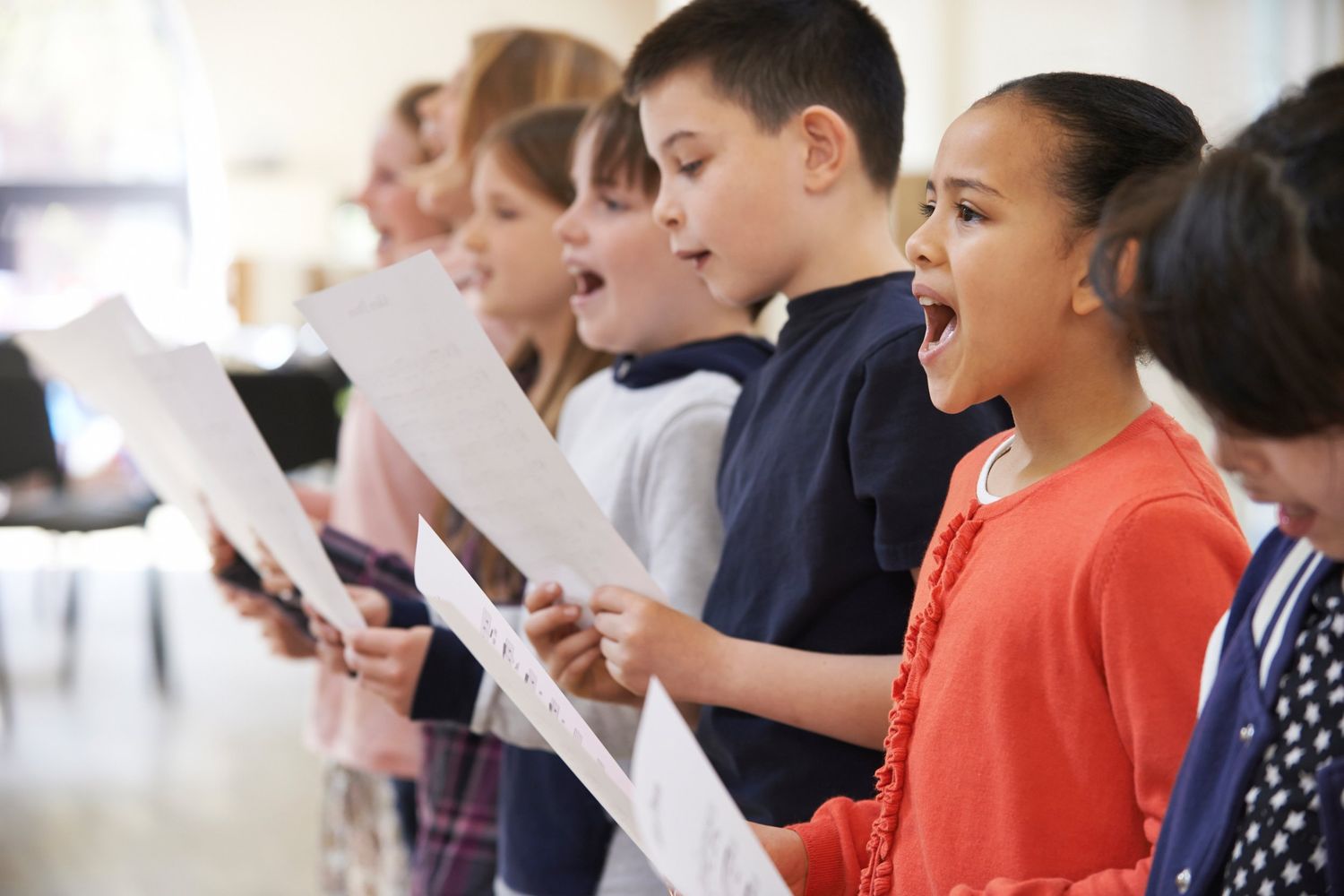Home>Events & Info>Acapella>How To Write An Acapella Song?


Acapella
How To Write An Acapella Song?
Modified: January 22, 2024
Learn how to write an acapella song with our expert guide. Discover tips and techniques to create harmonies and perform without instrumental accompaniment.
(Many of the links in this article redirect to a specific reviewed product. Your purchase of these products through affiliate links helps to generate commission for AudioLover.com, at no extra cost. Learn more)
Table of Contents
Introduction
Welcome to the world of acapella music! Acapella, derived from the Italian phrase “a cappella,” means singing without instrumental accompaniment. It is a captivating style of music that showcases the power and beauty of the human voice. From pop to jazz to gospel, acapella has captivated audiences with its harmonies and vocal techniques.
Writing an acapella song can be an exhilarating and rewarding experience. It allows you to showcase your musical creativity while highlighting the unique capabilities of the human voice. In this article, we will guide you through the process of writing an acapella song, from choosing a theme to performing it live. So, whether you’re an experienced songwriter looking to explore a new genre or an aspiring musician seeking to dive into the world of acapella, this guide is for you.
Writing an acapella song requires careful thought and attention to detail. Unlike songs with instrumental accompaniment, an acapella song relies solely on the vocals to convey the melody, harmony, and rhythm. It requires skilled vocal arrangements, harmonizing, and layering to create a full and captivating sound. Additionally, selecting the right vocal percussion techniques adds depth and excitement to the song.
In this guide, we will explore various aspects of writing an acapella song, including choosing a theme, crafting lyrics, creating vocal arrangements, selecting vocal percussion, harmonizing and layering, adding dynamics and emotion, polishing the song, and preparing for live performances. By following these steps, you will be on your way to creating a memorable and impactful acapella song.
So, let’s dive in and discover the magic of writing an acapella song!
Choosing Your Theme
When it comes to writing an acapella song, choosing the right theme is crucial. The theme sets the tone and direction of the song, giving it purpose and coherence. It provides the framework for your lyrics and helps you convey a specific message or emotion to your audience.
One way to choose a theme is to draw inspiration from personal experiences. Think about the emotions, stories, or life events that hold significance to you. It could be a personal struggle, a journey of self-discovery, or even a celebration of love and connection. By drawing from your own experiences, you can infuse your song with authenticity and depth.
Another approach is to explore universal themes that resonate with a wide range of listeners. Themes such as love, hope, friendship, or overcoming challenges are relatable and can connect with people on a deeper level. You can also consider social or environmental issues that you feel strongly about, using your song as a platform to raise awareness or inspire change.
Consider the genre of acapella music you want to create and let that guide your theme selection. Different genres evoke different emotions and moods. For example, if you’re aiming for a soulful and emotional ballad, your theme could revolve around heartbreak or longing. If you’re going for an upbeat and energetic acapella pop song, your theme could focus on empowerment or celebration.
Don’t be afraid to think outside the box and explore unique themes that haven’t been widely explored in acapella music. This can help you stand out and create a truly original and memorable song. Experiment with combining contrasting themes or incorporating elements from different genres to create your own unique sound.
Remember, the theme you choose should resonate with both you and your intended audience. It should be something that you feel passionate about and can authentically convey through your song. Take your time in selecting the right theme, as it will be the foundation upon which your acapella song is built.
Once you have chosen your theme, it’s time to move on to the next step: crafting the lyrics.
Writing Lyrics
Writing compelling lyrics is an essential part of creating an acapella song. The lyrics play a pivotal role in conveying the message and emotions of your song to the audience. Here are some tips to help you write impactful and engaging lyrics for your acapella song:
1. Start with a hook: The hook is the catchy and memorable phrase or line that captures the essence of your song. It serves as the focal point and leaves a lasting impression on the listeners. A strong hook can instantly grab attention and draw the audience into your song.
2. Tell a story or evoke emotions: Your lyrics should have a narrative or a strong emotional core. Whether you’re sharing a personal experience, painting a vivid picture, or exploring universal emotions, storytelling is a powerful tool in acapella songwriting. It helps create a connection with the audience and makes your song more relatable and engaging.
3. Use poetic devices: Incorporating poetic devices, such as metaphor, simile, alliteration, or personification, can add depth and creativity to your lyrics. These devices can help create vivid imagery and enhance the impact of your words. Experiment with different poetic techniques to make your lyrics more memorable and captivating.
4. Consider rhyme and rhythm: Acapella songs heavily rely on vocal harmonies and rhythmic patterns. Consider incorporating rhyme schemes and rhythmic patterns in your lyrics to create a cohesive and melodic flow. This will make it easier for the performers to harmonize and add layers to the song.
5. Maintain clarity and simplicity: While it’s important to be poetic and creative, it’s equally important to ensure that your lyrics are clear and easy to understand. Avoid excessive complexity or ambiguity that may confuse the listeners. Keep the language simple and straightforward without sacrificing depth and emotion.
6. Revise and edit: Songwriting is an iterative process, so be prepared to revise and edit your lyrics. Refine your ideas, improve the flow, and make sure each word serves a purpose. Collaborate with other musicians or seek feedback from trusted friends to get fresh perspectives and make your lyrics even stronger.
Remember, the lyrics are the heart and soul of your acapella song. They have the power to move and inspire, so take the time to create meaningful and impactful lyrics that align with your chosen theme. Once you have crafted the lyrics, it’s time to move on to the next step: creating vocal arrangements.
Creating Vocal Arrangements
Vocal arrangements are a crucial aspect of crafting an acapella song. They determine how the different voices interact and harmonize with each other, creating a unique and cohesive sound. Here are some tips to help you create effective vocal arrangements for your acapella song:
1. Start with the melody: The melody serves as the foundation for the vocal arrangement. It is the main theme of the song that the voices will harmonize around. Begin by identifying the melody and then experiment with different harmonies and vocal lines that complement and enhance it. Try out different chord progressions and variations to create a dynamic and engaging arrangement.
2. Consider voice types: Take into account the voice types and ranges of the singers you have available. Not all voices will be able to hit the same notes or sing in the same range. Utilize the strengths and unique qualities of each vocalist to create interesting vocal harmonies and counterpoints.
3. Explore different harmonies: Experiment with different types of harmonies, such as thirds, fifths, and octaves, to create rich and captivating vocal arrangements. Don’t be afraid to incorporate dissonance or unexpected intervals to add complexity and intrigue to the arrangement.
4. Utilize call-and-response: Call-and-response is a powerful technique in vocal arrangements where one voice initiates a melodic idea, and another voice responds with a complementary or contrasting phrase. This technique adds depth and dynamics to the arrangement, creating an engaging back-and-forth interaction between the voices.
5. Create vocal layers: Experiment with layering multiple vocal parts on top of each other to create a fuller and more textured sound. This can involve having different vocal lines singing different melodies or harmonies simultaneously. Use dynamics and varying vocal intensities to create contrast and highlight different sections of the song.
6. Pay attention to dynamics and phrasing: Dynamics and phrasing are essential in vocal arrangements. They emphasize the emotional nuances of the lyrics and bring the song to life. Experiment with changes in volume, intensity, and expression to add depth and emotion to the arrangement.
7. Don’t be afraid to simplify: Sometimes, less is more. Don’t overload the vocal arrangement with too many layers or complex harmonies. Focus on creating a clean and balanced sound that allows the beauty of the human voice to shine through.
Remember to always listen to your arrangement and make adjustments as needed. Collaborate with your singers and be open to their input and suggestions. Together, you can create a captivating and harmonically-rich vocal arrangement that brings your acapella song to life.
Once you have finalized the vocal arrangements, it’s time to move on to the next step: selecting vocal percussion.
Selecting Vocal Percussion
Vocal percussion, often referred to as beatboxing, adds rhythm and groove to an acapella song. It is the art of creating percussive sounds using only the human voice. When selecting vocal percussion techniques for your acapella song, consider the following:
1. Understand the genre: Different genres of music have distinct styles of vocal percussion. For example, beatboxing in hip-hop acapella songs may focus on providing a strong beat and bassline, while in pop or jazz acapella, it may be more subtle and complementary to the vocals. Be familiar with the genre you’re working with and tailor your vocal percussion accordingly.
2. Master the basic sounds: Familiarize yourself with the fundamental vocal percussion sounds, such as the kick drum, snare, hi-hat, and cymbal crash. Practice and perfect these basic sounds so that you have a solid foundation to build upon when creating more complex rhythms and patterns.
3. Experiment with vocal effects: Explore different vocal effects that can enhance your vocal percussion. These may include techniques like lip oscillations, throat bass, tongue slaps, and click rolls. Incorporating these effects can add texture and variety to your vocal percussion, creating a dynamic and engaging performance.
4. Sync with the vocal arrangement: Ensure that the vocal percussion aligns with the vocal harmonies and arrangements of the song. It should complement and enhance the overall sound rather than overpowering it. Coordinate with the vocalists to find the right balance and timing for seamless integration.
5. Embrace creativity: Don’t be afraid to think outside the box and experiment with unconventional vocal percussion techniques. Explore different rhythms, patterns, and textures to create unique and innovative sounds. Incorporate your own style, flair, and personality into your vocal percussion to make it stand out.
6. Practice and refine: Like any skill, vocal percussion takes practice. Spend time honing your techniques and refining your rhythms. Take advantage of online tutorials, workshops, and resources to improve your beatboxing skills. Collaborate with other vocal percussionists to exchange ideas and learn from each other.
7. Enhance the live performance: When performing live, vocal percussion adds an exciting visual element. Incorporate body movements, facial expressions, and stage presence to enhance the overall performance. Use your energy and charisma to engage and captivate the audience.
Selecting the right vocal percussion techniques can elevate your acapella song to new heights. It adds rhythm, groove, and a unique element to the overall sound. With practice and creativity, you can create captivating vocal percussion arrangements that complement your song and leave a lasting impact on your audience.
Once you have selected vocal percussion techniques, the next step is to focus on harmonizing and layering the vocals in your acapella song.
Harmonizing and Layering
Harmonizing and layering vocals is essential in creating a rich and dynamic acapella song. It involves blending different vocal parts together to create harmonies and textures that enhance the overall sound. Here are some tips to help you harmonize and layer vocals effectively:
1. Understand vocal harmony: Familiarize yourself with the concept of vocal harmony and how different notes and intervals combine to create pleasing sounds. Experiment with different chord progressions and vocal arrangements to find harmonies that complement the melody and create a sense of depth and richness.
2. Select appropriate harmonies: Choose harmonies that fit well with the melody and the overall mood of the song. Experiment with different harmonies, such as using thirds, fifths, or even unconventional intervals for a unique and captivating sound. Pay attention to the emotion and resonance that each harmony brings to the song.
3. Create vocal layers: Layering vocals adds depth and complexity to your acapella song. Consider dividing the vocalists into different sections, with each section singing different harmonies or vocal lines. This creates a multi-dimensional sound that captivates the listener and showcases the full capabilities of the human voice.
4. Balance the vocals: Ensure a proper balance between the lead vocals and the harmonies in your arrangement. The lead vocals should shine through while the harmonies provide a supportive and complementary backdrop. Adjust the volume and dynamics of each vocal part to achieve a pleasing balance that highlights the strengths of each voice.
5. Experiment with counterpoint: Counterpoint is the art of combining multiple melodic lines that are independent yet harmonically coherent. As you layer vocals, explore the inclusion of contrasting and intertwining melodic lines. This adds complexity and interest to your acapella song, making it more engaging for the listener.
6. Pay attention to consonants and vowels: Enunciate and articulate consonants and vowels clearly to ensure that each individual voice is distinguishable in the harmonies. This clarity allows the listener to fully appreciate the unique qualities of each voice while enjoying the harmonious blend.
7. Practice and refine: Harmonizing and layering vocals is a skill that comes with practice. Work closely with the vocalists to ensure precise timing and smooth transitions between vocal parts. Continuously refine and adjust the harmonies and layers to achieve the desired sound.
By harmonizing and layering vocals effectively, you can create a captivating and mesmerizing acapella song. It adds depth, texture, and emotion, elevating the overall impact of your music. Take the time to experiment, refine, and collaborate with your vocalists to create harmonies and vocal arrangements that truly shine.
Once you have perfected the harmonizing and layering, the next step is to focus on adding dynamics and emotion to your acapella song.
Adding Dynamics and Emotion
Adding dynamics and emotion is a crucial step in creating a captivating and memorable acapella song. Dynamics are variations in volume and intensity, while emotion infuses the song with feeling and expression. Here are some tips to help you add dynamics and evoke emotion in your acapella song:
1. Understand the power of dynamics: Dynamics play a significant role in music, creating contrast and impact. Experiment with using different levels of volume and intensity to highlight certain sections or lyrics of your song. Gradually increase or decrease volume to create tension and release, drawing the listener in and keeping them engaged.
2. Vary the intensity: Alter the intensity of your vocal performance to match the emotional content of the lyrics. Soft, gentle vocals can convey vulnerability, while strong, powerful vocals can express passion or determination. Playing with contrast in intensity adds depth and richness to your acapella song.
3. Explore vocal techniques: Experiment with vocal techniques such as vibrato, falsetto, or melisma to evoke specific emotions in your song. These techniques allow you to add nuances and expressiveness to your vocals, enhancing the emotional impact on the listener. Use them strategically to highlight certain phrases or capture the essence of the lyrics.
4. Utilize pauses and breaks: Silence can be just as powerful as sound. Incorporate strategic pauses or breaks in your acapella song to create moments of anticipation or to emphasize certain lyrics. These pauses allow the audience to absorb the lyrics and experience the emotional weight of the song.
5. Connect with the lyrics: To convey emotion effectively, it is crucial to connect with the lyrics on a personal level. Understand the story, message, or sentiment behind the lyrics and let that connection shine through in your vocal delivery. Authenticity in your performance enhances the emotional impact and resonates with the listener.
6. Utilize vocal dynamics in harmonies: Adjusting the dynamics within the harmonies can add depth and complexity to your acapella song. Experiment with having certain vocal parts crescendo or decrescendo to create a wave-like effect, adding movement and depth to the arrangement. This technique enhances the emotional journey of the song.
7. Embrace vocal ornamentation: Vocal ornamentation, such as runs, trills, and embellishments, can add emotional flair to your acapella song. However, be mindful of using them tastefully and purposefully, ensuring they enhance the overall emotional impact without overpowering the song.
Adding dynamics and emotion to your acapella song allows you to connect with your audience on a deeper level. It brings the lyrics to life and creates a memorable and impactful performance. By understanding the power of dynamics, exploring vocal techniques, and connecting with the emotions of the song, you can create an acapella masterpiece that resonates with listeners.
Once you have perfected the dynamics and emotion in your acapella song, the next step is to polish and refine it before rehearsal and performance.
Polishing Your Acapella Song
Polishing your acapella song is an important step in ensuring that it is ready for rehearsal and performance. This involves refining the various elements of your song to create a cohesive and professional-sounding piece. Here are some tips to help you polish your acapella song:
1. Fine-tune vocal arrangements: Review the vocal arrangements and harmonies to ensure they are balanced and cohesive. Listen for any areas that may need adjustment or improvement. Consider seeking feedback from trusted musicians or coaches to gain fresh perspectives on your arrangement.
2. Clean up transitions: Smooth transitions between sections and vocal parts are essential for a polished performance. Pay attention to any abrupt or awkward transitions and work on making them seamless and natural. Practice the transitions with your vocal group to ensure everyone is on the same page.
3. Refine vocal techniques: Focus on refining your vocal technique to ensure clarity, pitch accuracy, and control. Fine-tune your breath support, articulation, and tone production. Consider working with a vocal coach or participating in vocal workshops to further improve your vocal skills.
4. Check for intonation: Intonation refers to the accuracy of pitch while singing. Listen carefully for any pitch discrepancies and work on correcting them. Pay attention to intervals, harmonies, and sustained notes to ensure precise intonation throughout the song.
5. Evaluate phrasing and dynamics: Review the phrasing and dynamics of your acapella song. Ensure that the lyrics are delivered with proper phrasing and musicality. Experiment with different dynamics to add depth and expressiveness to your performance.
6. Polish vocal percussion: If your song includes vocal percussion, ensure that the rhythms and sounds are clean and well-executed. Practice specific techniques to improve precision and clarity. Collaborate with other vocal percussionists to refine the percussive elements and create a cohesive rhythmic foundation.
7. Pay attention to diction: Clear and precise diction is crucial for effective communication of the lyrics. Ensure that each word is articulated and understood by the listener. Practice enunciating consonants and shaping vowels to improve overall diction.
8. Fine-tune dynamics: Continue to refine the dynamics of your acapella song. Work on creating subtle changes in volume and intensity to add shading and emotive impact. Experiment with crescendos, decrescendos, and other dynamic nuances to enhance the musical journey of your song.
9. Seek feedback: Once you have polished your acapella song to the best of your ability, seek feedback from others. Perform for friends, family, or fellow musicians and ask for their constructive criticism. Utilize their input to make final adjustments and improvements.
By dedicating time and effort to polish your acapella song, you will elevate its quality and impact. Remember that perfection is a journey, and continuous refinement is key to creating a polished and professional end result.
With your acapella song polished and refined, it’s now time to proceed to the crucial steps of rehearsing and performing.
Rehearsing and Performing
Rehearsing and performing are vital stages in bringing your acapella song to life and captivating your audience. Proper preparation and attention to detail can make a significant difference in the quality of your performance. Here are some tips to help you rehearse and deliver a compelling acapella performance:
1. Schedule regular rehearsals: Set a consistent rehearsal schedule with your vocal group to ensure everyone is present and focused. Dedicate time to practice the song as a group, paying attention to vocal blend, dynamics, and harmonies. Practice not only the technical aspects but also the emotional delivery of the song.
2. Break down the song: Break down the acapella song into sections or individual vocal parts. Focus on perfecting each section gradually, paying attention to details and nuances. Work on difficult passages and transitions to ensure a seamless and polished performance.
3. Fine-tune vocal arrangements: Use rehearsal time to refine vocal arrangements and harmonies. Ensure everyone is comfortable with their vocal parts and knows when to enter and exit. Practice harmonizing and blending the voices to create a unified sound.
4. Practice vocal percussion: If your acapella song includes vocal percussion, dedicate time to practice and synchronize the percussive elements. Focus on precision, rhythm, and dynamics to create a cohesive rhythmic foundation for the song.
5. Pay attention to stage presence: Aside from the technical aspects, work on your stage presence and performance skills. Consider the visual impact of your performance, including posture, facial expressions, and gestures. Practice conveying emotion and connecting with the audience through your performance.
6. Record and analyze: Record your rehearsals and performances to evaluate and analyze your progress. Listen to the recordings carefully, identifying areas that need improvement or adjustment. Use these recordings as a tool to fine-tune your performance and make necessary adjustments.
7. Seek constructive feedback: Solicit feedback from trusted individuals, such as vocal coaches or other musicians, who can provide constructive criticism. Their insights can help you refine your performance, address any weaknesses, and enhance your overall presentation.
8. Embrace spontaneity and connection: While rehearsals are essential for technical precision, leave room for spontaneity during performances. Allow yourself to connect with the music, the lyrics, and the emotions of the song. Let the energy of the performance flow naturally, creating a captivating and engaging experience for your audience.
9. Perform with confidence: On the day of the performance, approach the stage with confidence and enthusiasm. Trust in the hard work you have put into rehearsing and the preparation you have done. Project your voice, connect with the audience, and enjoy the experience of sharing your acapella song with others.
Rehearsing and performing are transformative stages that bring your acapella song to life. Through dedicated rehearsal, attention to detail, and confident stage presence, you can deliver a captivating and memorable performance that resonates with your audience.
As you conclude your performances, take time to reflect and celebrate your accomplishments. Remember that each performance is an opportunity for growth and improvement. Embrace the journey of acapella music and continue to explore and create beautiful music with your unique vocal talents.
Conclusion
Congratulations on embarking on the journey of writing, polishing, and performing an acapella song! Throughout this guide, we have explored the various steps involved in creating a captivating acapella composition. From choosing a theme and writing lyrics to harmonizing, layering, and adding dynamics, each step contributes to shaping a unique and impactful song.
Writing an acapella song allows you to showcase the power and beauty of the human voice. It is a genre that requires careful attention to detail, technical skill, and artistic expression. By following the tips and techniques outlined in this guide, you can create a captivating and memorable acapella song that resonates with your audience.
Remember that the journey of creating an acapella song doesn’t end with the final performance. It is an ongoing process of growth and refinement. Continuously seek opportunities to improve your vocal technique, explore new harmonies and arrangements, and refine your performance skills. Each performance is a chance to connect with your audience and share your passion for acapella music.
Don’t be afraid to step outside your comfort zone and let your creativity shine. Acapella offers a unique platform to experiment with different vocal techniques, harmonies, and rhythms. Embrace the freedom to push boundaries, explore unconventional ideas, and create your own signature sound.
Lastly, remember that music is a form of self-expression, and your acapella song is a reflection of your artistry. Enjoy the process and embrace the joy of creating music with your voice. Let your passion, creativity, and emotions guide you as you write, rehearse, and perform your acapella song.
Now, armed with the knowledge and inspiration from this guide, it’s time to embark on your acapella songwriting journey. So, embrace your unique voice, trust in your talent, and let the world experience the magic of your acapella creation. Happy singing!


